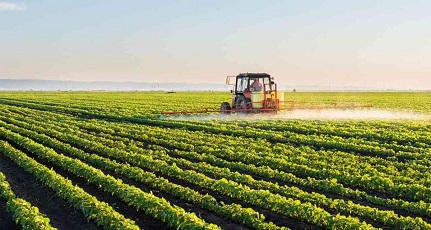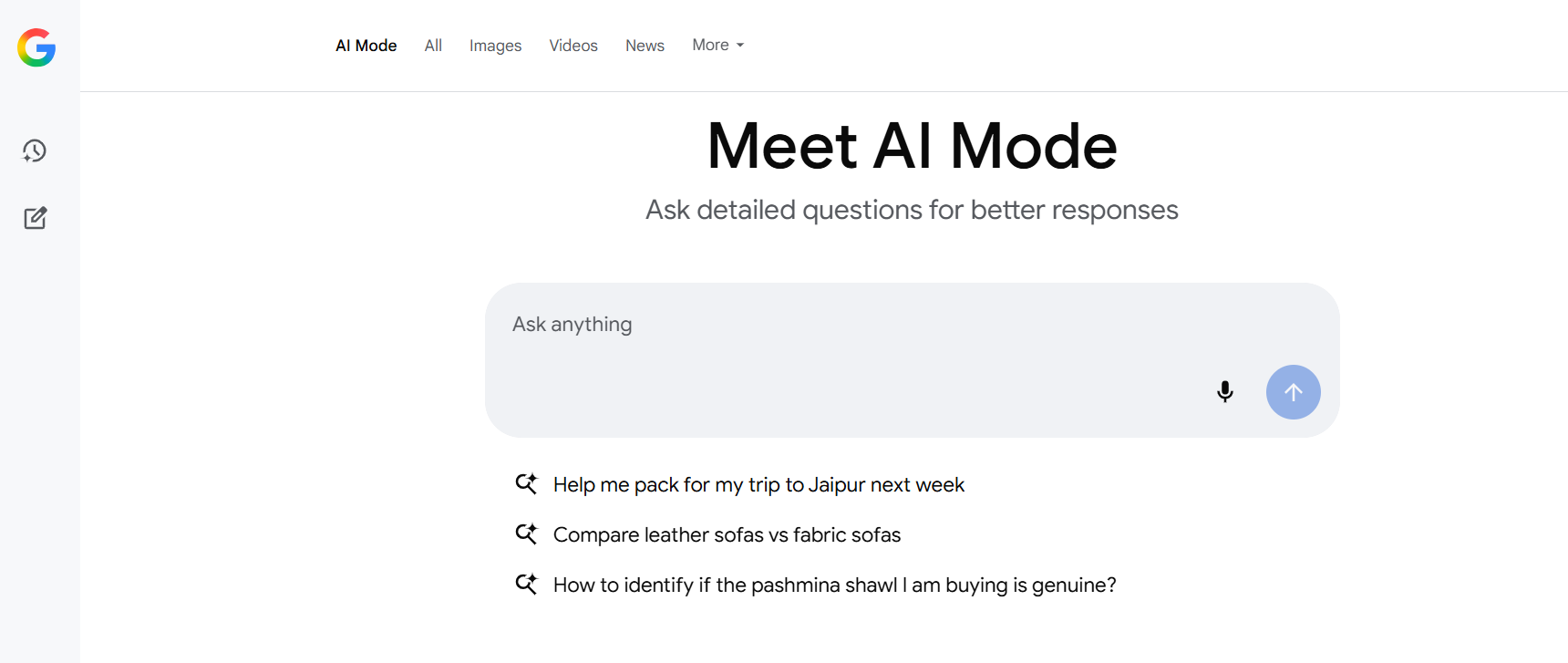Technology can definitely be considered as one of the most important contributions of human-kind to itself. We have created and continue to create a world where there is a sustained emphasis on the need for technology to make our lives easier, to supplement or support our existences in order to minimize the physical exertion of tasks, and maximize efficiency in order to contribute to industrial output. Technology has seeped into almost every aspect of our lives and whether or not the pace at which it is, needs to be checked or altered, is perhaps the subject of another discussion.
At the moment, we are looking at perhaps one of the largest concerns that we, as a global economy are facing and that is: Food production. With a population that is estimated to grow exponentially over the next few decades, it has become increasingly important for us to re-evaluate the existing methods of production and like always, look at technology for providing us with the solutions.
With the population forecast, experts have predicted that we will definitely be looking at a food shortage, if we are to not address these problems and bring about sustainable innovations in the agricultural sector, sustainable here, being the keyword. It is clear that an urbanised way of life and a post-industrialized society has put an immense burden on the agricultural sector, with demand increasing exponentially coupled with the rising energy prices, falling groundwater levels due to unsustainable irrigation and other concerns. I also feel the need to address here, how mono-cropping as a culture has resulted in this phenomenon of ‘unsustainable irrigation’, in turn putting a significant amount of burden on the farmers.
Smart Farming has arrived. Not arrived, in a glamorous way, but is definitely making its in-roads into different aspects of this sector. Observing the demand and the functioning of such technology and its wide-spread acceptance in rural or semi-urban areas and districts, where the social realities are different and a lot more complex, can either result in complete success or a complete failure.
There are some cases where Smart Farming is being used. Let us discuss those:
Effective Crop Management
This is perhaps one of the most important uses of IOT-enabled agriculture. Crop management technology would help oversee the observation, control, and measurement of the crops. Using micro-sensing technology, in this case, would assist the farmer in maintaining a keen eye on the health conditions of the crops. Keeping a keen eye on how the crop is doing, is an important job for the farmer and perhaps one of the most tedious ones, as spotting pests and disease for contamination is not always easy. With the help of IOT solutions, the farmer can rely completely on the technology for the process. These sensors can also be very helpful in the case of immediate identification of any pests circling on the crops and comes with an alert mechanism that can make it a lot faster and efficient for the farmer.
Livestock and Fishery Management
Livestock is extremely important for the farmer and so is its well-being. A wide range of issues can be covered under technology which would include the health status of the livestock, conception readiness, and other kinds of reproductive data. In another case, this technology can also anticipate and predict the possibility of disease and the steps one can pre-emptively take in order to eliminate multi-resistant germs.
Smart Logistics
It has been estimated that over 20% of the world’s food production is destroyed due to storage and transportation problems. These losses occur in different parts and points of the supply chain, something that is very difficult to track and is a significant contributor to pest infestation. Delays in transport can occur, which can cause havoc in the supply chain system. There have been studies done by leading institutions on the role of M2M solutions and how they can tackle the problem of wastage.
Crop-wise monitoring through Drones
Crop-wise monitoring through drones can analyze and monitor crops thoroughly. The camera and the sensor technology present within the drones can analyze crops, down to a single leaf. When integrated into a machine learning solution, this can provide a detailed discovery of the farmer’s crop. This is particularly important in the case of large farming patterns, as it is sometimes very difficult for the farmer to be able to anticipate and discover crop infestation in time, thus resulting in devastating crop failures for the farmer which could impact the entire human-centered food chain.
The drawbacks of IOT in Agriculture
With more reliance on technology, it also becomes more important to install safety and security measures in order to counter any malicious software that could overturn the entire system. As more and more specific data is collected, the more the chances of the vulnerabilities and access points being exposed. As data becomes more operation-specific and more and more detailed, this can become an invitation for hackers to seize control of applications. If hackers were to gain access to the pesticide dispersal system, as an example, they would be in a position to spray more chemicals than needed, killing entire crop yields.
Even though the cost of IOT-enabled services is not overly expensive, they can become unaffordable when it comes to procuring them in bulk. It is not just the hardware that will need to set up, but also the supporting software that will support the massive influx of data. Efficient data storage is also something that needs to be considered, especially when there is so much operation-specific data that is being gathered. The backend that is required to organize, analyze, and interpret the data for such a process would be extensive and would require a huge investment in terms of operationalization and maintenance.
IN addition to this, there is a huge impact on the environment that the installation of this technology would bring. Humans, historically, have been known to care the least about the environment, which can be displayed through the current climate crisis that we are living out. In this case, it becomes all the more important to understand the environmental implications of such technology. Technologies like these will require massive power to run and a large-scale operation such as this would need massive amounts of energy. AI and IOT-enabled solutions will definitely fossil fuels to operate, thus polluting the environment even more. The extended trouble with the fast-paced adoption of this technology is that it is not being matched with investments in sustainable technology or any kind of renewable energy. These modern technologies might not be the perfect fix for the situation that we are in, given the current climatic shift that is taking place. It will become more important to also evaluate and measure the environmental implications of such a move and how it will make a difference to other stakeholders of the planet that we are a part of.
Conclusion
In conclusion, I would just like to state that even modern technology in farming operations would take a huge burden off the farmer, it becomes very important to consider that decisions taken at the macro-level cannot always work at the micro-level. In a country like India, where rural electrification is still a concern, this type of technology is not something that can be considered before that. More importantly, this technology can also have a negative impact on the well-being of farmers who are not able to afford this technology. It is clear that with the level of investment that will be required for this kind of infrastructure, it is the well-to-do farmers who are going to be able to implement this.
Lastly, the environmental implications are more important than before and it is important to fully critique the technology that is being used, before its implementation. Agriculture and farming operations are the backbones of any economy and it is important to understand the implications of any new introduction to this sector, as this is a sector that has historically been neglected, especially when it comes to the plight of the farmers. In addition to this, technology can also help us re-think the existing patterns of agriculture, which have not kept in mind the different land-use patterns. Technology can also provide an insight into how these challenges can be met with and the different approaches that one can consider in terms of different cropping patterns, which can provide immediate relief to the farmers.
Logistics and transport are definitely an aspect where there is a need to improve and provide for better infrastructure and this can help tackle the problem of food shortage and the inadequacies in our food supply chain. The purpose of an introduction of any technology should first keep the farmers and the farmer’s immediate concerns in mind, rather than the swift implementation of technology. It is also important for organizations and companies promoting this technology, to rely on the farmer’s existing knowledge and co-create a system that would, in turn, benefit the entire community.

 Web and Full Stack
Web and Full Stack CMS and Frameworks
CMS and Frameworks Online Marketing
Online Marketing Cloud Services
Cloud Services ECommerce
ECommerce Mobile
Mobile



